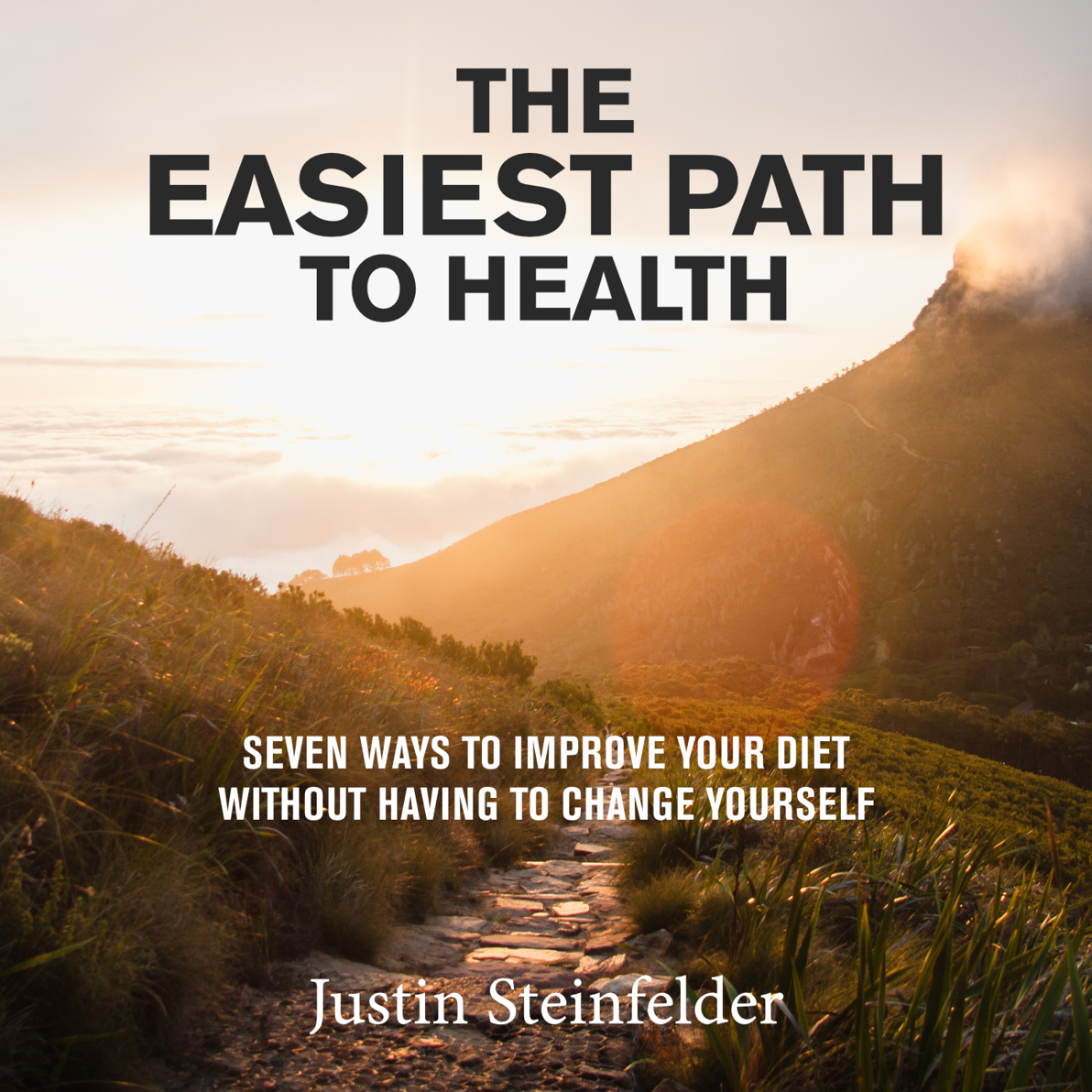Reading Time: ~10-12 min
Introduction: You Should Join A “Book Club”
To say I’m in a book club would be misleading.
It isn’t the ‘book’ part, though. Books, we’ve got. It’s more the ‘club’ part that’s euphemistic. It’s not really a club. It’s just two people— me and Geremy. Less book club, more like-minded duo.
At first blush, this probably just looks like a semantical quibble. Club, duo, what’s the difference? As long as you have a couple people willing to read and talk about books on a regular basis, who cares if it qualifies as a ‘club’?
That’s what we thought.
Ironically, it was some of the very books we were reading that made this oversight clear.
It turns out, the difference between ‘club’ and ‘duo’ can be the difference between getting and not getting the most powerful gift that books have to offer. And it starts with book selection.
WE STARTED OUR BOOK duo with the following basic rules in mind:
- Read one book per month,
- Email each other three learnings or impressions from the book, and
- Discuss each person’s ideas on a 1 hour-ish call at the end of the month
That process was going well the first couple years. But then we noticed the flaw.
The books we were reading each month started to look suspiciously similar. For one thing, the physical traits of each author looked a shade too, let’s say, US Politique. (Read: older, American, white guys).
For example, in the first year, we read books about productivity, business, and psychology. Here are some of the authors:
Adam Grant, David Allen, Peter Thiel, Stephen Johnson.

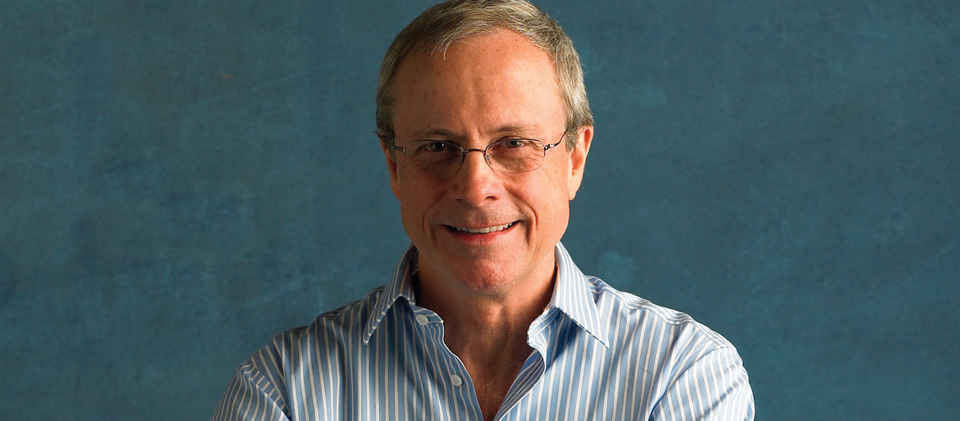
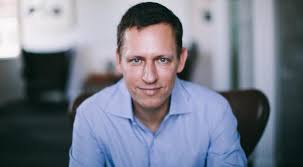
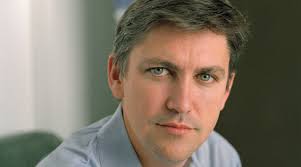
See what I mean?
In the second year, we did a bit better, including Mary Oliver and Yuval Harari, but we still had most of the same. People like Ryan Holiday, Ashlee Vance, Kevin Kelly, and Ray Dalio.
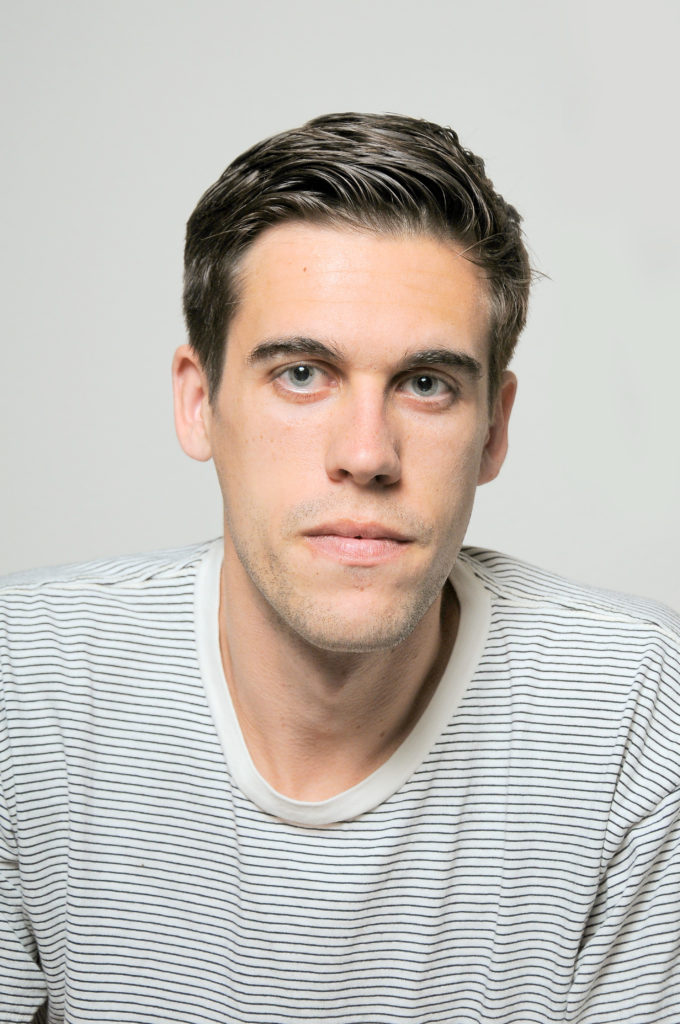
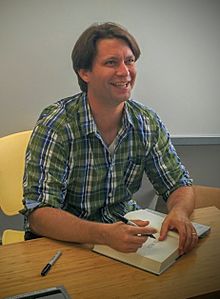
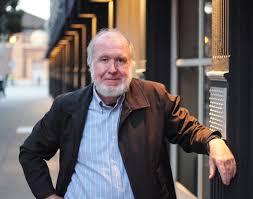

But why is this a problem? As long as we were reading and learning and having thoughtful discussion, right?
Wrong.
The problem with the duo— especially a like-minded duo— is it keeps you from enjoying literature’s greatest superpower: the ability to see the world through other eyes.
The writer C.S. Lewis (of Narnia fame) wrote in a 1961 essay on the power of reading:
“Literary experience heals the wound, without undermining the privilege, of individuality… in reading great literature I become a thousand men and yet remain myself… I see with a myriad eyes, but it is still I who see. Here, as in worship, in love, in moral action, and in knowing, I transcend myself; and am never more myself than when I do.”
The point is— you read to see more than you can see yourself. The greater variety, the greater the perspective. The natural advantage of the club over the duo (and the duo over the individual) is simply that it has more people in it. More people tends to raise the range of perspective.
This increased insight is not just with respect to book discussion. Much more importantly, it is with respect to book selection.
More and different people are more likely to select a greater variety of books— books the others wouldn’t have even thought of. The larger book variety, the larger extent to which Lewis’s ‘wound of individuality’ is healed.
But if you are short of bookwormish friends, fear not. The ‘wound-healing’ effect of the club can be mimicked by the duo. You just need to set some rules.
And that’s what Geremy and I did last year.
ABOUT HALF WAY THROUGH LAST YEAR, Geremy and I started implementing rules that forced us to choose more books outside of our normal realms— other time-periods, demographics, geography, subjects. We didn’t allow ourselves to settle with our first, or even second, instinct. Instead, we pushed and prodded, until we produced three recommendations that were all just on the borderline of comfortable— then we had the other person choose.
We needed to read at least:
- five books written by women
- four books by non-white authors
- two fiction books
- one book in each of the categories of history, poetry/play, philosophy, essay collection and technology/science
- one book of Eastern origin
- two biographies (2)
- one Pulitzer, Booker Prize or National Book Award winner
The impact has been profound. Because not only are we gaining eyes through which we would not have normally looked, but we also have found that we are actually enjoying the books and the discussions more.
In 2019, we’ve already read a war manual by a 17th century, Japanese male, warrior / Buddhist, a novel by a late 19th / early 20th -century British women (below), and a 1960s memoir by a southern, African American, female (below). OK, fine, we also through in one by an old, rich white guy— old habits die hard (below).
Of course, there isn’t any per se problem reading books by billionaire white guys (especially if you wouldn’t mind being one)— just as long as they aren’t the rule.
Below are some of the best we’ve covered, including opinions from both of us, on a wide range of books.
All of these books were not merely good, but great. A couple are All-Time.
Three Books for A Mid-Summer Night’s Read
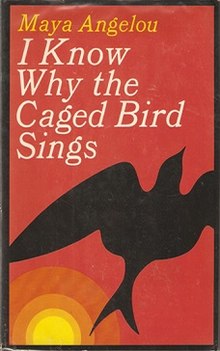
I Know Why The Caged Bird Sings, Maya Angelou
Genre: Memoir, Classic
Perspective: early-to-mid 20th century, Oppressive 1930s-60s American South, African-American, Poor, Female, Young Mother
“I know why the caged bird sings, ah me, When his wing is bruised and his bosom sore, When he beats his bars and would be free; It is not a carol of joy or glee, But a prayer that he sends from his heart’s deep core, But a plea, that upward to Heaven he flings – I know why the caged bird sings.”
Paul Laurence Dunbar
For guys like me and Geremy, it’s nearly impossible to relate to a book like this. Angelou’s experience, growing up in the poor, racist South, as a black woman, might as well have been on a different planet then the suburban, mostly white, mostly wealthy culture in which we were raised. Angelou’s recitation of absolutely horrifying childhood events— for example, being repeatedly raped by her mother’s boyfriend— were not only jolting and scary to read, but I felt such a distance as to not be able comprehend the writing at all. The saving grace, though, as Geremy pointed out, was her elegant use of analogy.
Geremy wrote to me, that although we obviously cannot begin to imagine her experience, we can “much more deeply understand and empathize with [her] experiences due in large part to her comparisons and ability to equate feelings, settings, occurrences, and people with others.”
One example is, of course, in the title. It’s the position in which racism and poverty and rape placed Angelou. In one sense, she felt trapped, as in a cage. But she still sings— with defiance and hope— and dreams of her freedom, physical and spiritual.
For me, one of the most powerful aspects of this book, was in the heroes that Angelou kept in close proximity to fuel this defiant hope. It was apparent to me that the people she looked up to were those stoic, balanced, steadfast.
Angelou used her great analogic ability here, comparing the type of person she wanted to be with the state of late WWII, mid-1940s, San Francisco:
“The city became for me the ideal of what I wanted to be as a grownup. Friendly but never gushing, cool but not frigid or distant, distinguished without the awful stiffness.”
And then again, towards the end of her book, when she imagines the type of mother and adult she wants to be, after being, in many ways, thrust into it by a very young, often hidden, pregnancy:
“The quality of strength lined with tenderness is an unbeatable combination, as are intelligence and necessity when unblunted by formal education. These mixing of qualities and balance. Not too much, not too little.’
What’s crazy about this book is I didn’t realize just how much it impacted me until I recounted what I’d learned. The realization that, ok, no, I’m not anything like this woman. I don’t know the first thing about what it’s like to be a poor, southern, awkward black girl in an oppressive southern culture. Let alone anything about rape, poverty, teen pregnancy.
But, even so, in her deepest core, she’s still a human. She still dreams— ‘sings,’ as it were— of getting out of that cage, no matter the material of which any particular cage is constructed. We all know, I think, why the caged-bird sings. And Maya Angelou gives us a glimpse as to why her’s does.
I Know Why The Caged Bird Sings is most certainly All-Time. Try mixing in some of the audio version, as it is read by Angelou herself.
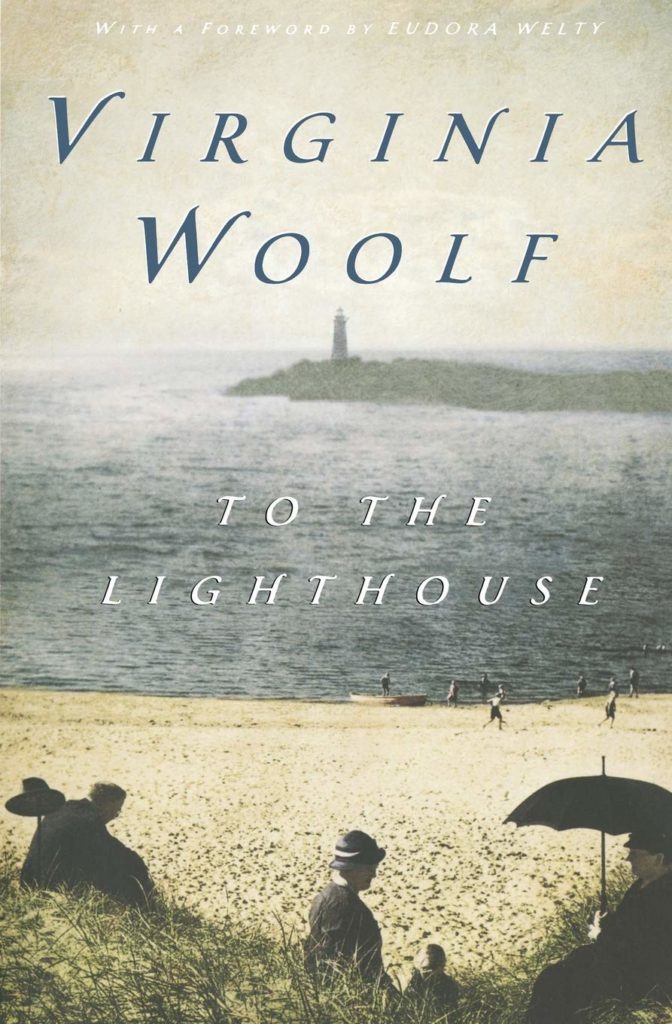
To the Lighthouse, Virginia Woolf
Genre: Fiction, Classic
Perspective: late-19th-to-early-20th century, English, Woman, affluent
“Life, from being made up of little separate incidents which one lives one by one, becomes curled and whole like a wave which bears one up with it and throws one down with it, there, with a dash on the beach.”
I had never read Virginia Wolfe before this book. After I read it, I quickly ordered three more Woolf titles.
Like Caged Bird, it took a second for me to really settle into this book. But, when I did— when I gained a sense of Woolf’s whimsical, subconscious writing and rhythm— I was quickly thrown into a state of awe.
If you’ve ever read Shakespeare or Faulker or Joyce, you know the effect I am talking about. The writing is different than you are used to, so you need a second to understand the language and to get into the cadence. But once you do, you’re in that world, and it’s a great world— the world of a master storyteller. Reading Woolf is like that. Woolf makes language pliable; she can bend words however she wants.
One of the most fascinating aspects of Lighthouse, is that, though nothing really happens, the in-depth study of the people— their feelings, fears, dreams— and their experience of mundane events, together with Woolf’s poetic writing style, is compelling enough to keep you sucked in for hundreds of pages.
Staying on our theme of gaining perspective, Geremy wrote about being dazzled by Woolf’s multi-perspective narration, getting into the heads of every character. A key quote he pointed to was referring to the quaint, proper, tidy, ever-pleasing point of view of the mother of the house, Mrs Ramsay:
“For in the rough and tumble of daily life, with all those children about, all those visitors, one had constantly a sense of repetition–of one thing falling where another had fallen, and so setting up an echo which chimed in the air and made it full of vibrations.”
To me, it was all about Woolf when she was speaking of life and what she calls ‘moments of being.’ These are times when you realize, all at once, the timelessness of the world, and the quickness of your own:
“What is the meaning of life? That was all— a simple question; one that tended to close in on one with years. The great revelation had never come. The great revelation perhaps never did come. Instead there were little daily miracles, illuminations, matches struck unexpectedly in the dark; here was one. This, that, the other; herself and Charles Tansley and the breaking wave; Mrs Ramsay bringing them together; Mrs Ramsay saying, “ Life stand still here” ; Mrs Ramsay making of the moment something permanent— this was of the nature of a revaluation. In the midst of chaos there was shape; this eternal passing and flowing was struck into stability. Life stand still here, Mrs Ramsay said. ‘Mrs Ramsay! Mrs Ramsay!’ She repeated. She owed it all to her.”
Why We Sleep, Matthew Walker

Genre: Science, Sleep, Health
Perspective: Male, English, White, Neuroscientist, Psychologist, Ivy-level Professor, Expert
“This silent sleep loss epidemic is the greatest public health challenge we face in the twenty-first century in developed nations. If we wish to avoid the suffocating noose of sleep neglect, the premature death it inflicts, and the sickening health it invites, a radical shift in our personal, cultural, professional, and societal appreciation of sleep must occur.”
Ironically, after reading this book, I sometimes found it harder to fall asleep. I’d toss and turn, continuously agonizing about all of the sleep I was not getting and the consequent brain inflammation and stupidity I would sustain.
Having said that, I am not sure there has been a more eye-opening (or eye-closing) book I’ve read on health in at least a couple years.
The key distinction for me was when Walker made clear how confused we all are about the difference between getting six and eight hours of sleep. For most of us, the biggest consequence of six versus eight hours is a midday coffee, slight grogginess. But, Walker shows consequences that are far graver.
Walker cites one study where the researchers broke participants into four groups. For two weeks, they were prescribed a certain “dose” of sleep. The first group pulled all-nighters, the second group slept four hours per night, the third, six hours and the last, eight hours.
The scary difference was between the six and eight hour group. The eight hour group showed no lapse in performance tasks over the two-week period, being well-rested. But it wasn’t the same for the six hour group:
“Most worrying from a societal perspective were the individuals in the group who obtained six hours of sleep a night—something that may sound familiar to many of you. Ten days of six hours of sleep a night was all it took to become as impaired in performance as going without sleep for twenty-four hours straight. And like the total sleep deprivation group, the accruing performance impairment in the four-hour and six-hour sleep groups showed no signs of leveling out. All signs suggested that if the experiment had continued, the performance deterioration would continue to build up over weeks or months.”
One of Geremy’s most troubling points was in reference to things we all use at night, or close to night, but that impact our quality of sleep profoundly. Those are screens, alcohol, and caffeine.
Screens. Walker shows that reading an ipad (or smart phone) before bed will impact your brains ability to signal the body to go to sleep. “Compared to reading a printed book, reading on an iPad suppressed melatonin release by over 50 percent at night.” In the study, individuals who read an IPad before bed as compared with a print book, took longer to fall asleep, experienced less quality sleep, and took longer to fall asleep in the days after.
Caffeine. Caffeine works by blunting a chemical in your brain called adenosine. Adenosine makes you sleepy. This might be fine if its effects were contained to a couple afternoon hours, but caffeine lasts in your system for a LONG time. “Caffeine has an average half-life of five to seven hours. Let’s say that you have a cup of coffee after your evening dinner, around 7: 30 p.m. This means that by 1: 30 a.m., 50 percent of that caffeine may still be active and circulating throughout your brain tissue. In other words, by 1: 30 a.m., you’re only halfway to completing the job of cleansing your brain of the caffeine you drank after dinner.”
Alcohol. Walker shows that alcohol is the third enemy of good sleep. Walker says “the evidence is so strong regarding alcohol’s harmful effects on sleep” that he has to recommend strict policy of avoiding it if you want good sleep:
“What is the recommendation when it comes to sleep and alcohol? …Many people enjoy a glass of wine with dinner, even an aperitif thereafter. But it takes your liver and kidneys many hours to degrade and excrete that alcohol, even if you are an individual with fast-acting enzymes for ethanol decomposition. Nightly alcohol will disrupt your sleep, and the annoying advice of abstinence is the best, and most honest, I can offer.”
Bonus: Old, White Billionaire
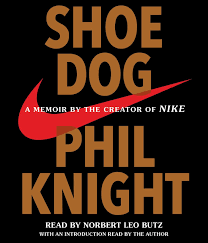
Shoe Dog, Phil Knight (Founder of NIKE)
Genre: Memoir, Business
Perspective: Athlete, Billionaire, Business-Minded, White, Old, Pacific-Northwest Suburban Childhood
“Nike was more than a shoe. I no longer simply made Nikes; Nikes were making me. If I saw an athlete choose another shoe, if I saw anyone choose another shoe, it wasn’t just a rejection of the brand alone, but of me.”
This is the story of how a college track athelte took a risk, flew to Japan, made a deal to start selling Japanese running shoes in the US, and, on the back of many more gambles throughout, turned that tiny shoe distribution into his own empire— what is today, NIKE. Knight is a good writer, and tells the story with enthusiasm and maintains a surprising level of suspense.
Both Geremy and I felt the book was written a hair too romantically. The idea that “I took that chance, I knew it, I willed it to happen” and that “you can do it if you put your mind to it.” Some of it felt like a man who made his story too tidy— that piece perfectly fitting with this one— instead of a hodgepodge of luck and circumstance, and, yes, persistence.
Geremy found that, in addition to persistence and determination, Knight’s greatest assets was “his judgement of character and knack for finding great people.” He surrounded himself with a bunch of people passionate about running and shoes. And though they were smart people, Knight showed special ability in making them feel like they could do even more— often giving them responsibility’s with no instructions, and putting his full confidence in them.
To me, this was a story of evolving purpose and motivation. In the beginning, Knight had an idea, took a chance on it because he thought it would be fun and was a bit of a romantic. The idea of “going to Japan and starting a shoe company” was fun. After he started, he didn’t know what he was doing it, reflecting that he just “didn’t want to lose.” After a while, when it started to get bigger, Knight said that at that point, it wasn’t about shoes and track, it was about his identity. If they had a bad day, he did, and vice versa. Finally, as he got older and the company evolved, he found more of that “bigger purpose” that is so in vogue these days.
“It’ a basic process that enables out higher aims, and life always strives to transcend the basic processes of living— and at some point in the late 1970s, I did, too. I redefined winning, expanded it beyond my original definition of not losing, of merely staying alive. That was no longer enough to sustain me, or my company. We wanted, as all great businesses do, to create to contribute and we dared to say so aloud. When you make something, when you improve something, when you deliver something, when you add some new thing or service to the lives of strangers, making them happier, or healthier, or safer, or better and when you do it all crisply and efficiently, smartly, the way everything should be done but so seldom is— you’re participating more fully int eh whole grand human drama.”
This reflects a lot of what we learned from Angela Duckworth’s Grit— that purpose evolves overtime, and most of the time, people don’t know their big “why” until well into their business.
Other great books this year from my own shelf:
- Dreams From My Father, Barack Obama (1995) – Written just after Obama graduated Harvard Law (where he was the first ever black president of the Harvard Law Review), Obama tells the story of his young adult life, searching for where he came from, and where he is going. It was fascinating to experience a future President still figuring his life out, years before he even considered the ridiculous notion that one could be President of the US. I loved it.
- Becoming, Michelle Obama. Hungering for more Obama family after reading Dreams, I wanted to hear about how they met who who Michelle was and is. I didn’t know how smart and aspirational Michelle had been in her own right– also going to Harvard Law, eventually becoming an Associate Dean at the University of Chicago and then a VP at the University of Chicago Med School. The most interesting part of this book was also the young Michelle, still trying to figure herself and life out– ‘becoming,’ as it were.
- Consider the Lobster and A Supposedly Fun Thing I’ll Never Do Again, David Foster Wallace. I’ve been absolutely floored by DFW’s essays. I could read them all day. They are long and they require focus, but they are also hilarious and wise. I’ll start on his fiction by the end of the year.
- Superforcasting, Phil Tetlock. The world-renowned psychologist on what unique qualities it takes to make solid predictions in an uncertain world. Surprisingly, it is not the narrow expert (the “hedgehog”) who has the edge. It’s the “fox” — someone who reads broadly and is proactively open-minded. The Dilettante, perhaps?
Rereadables:
- The Writing Life, Annie Dillard. One of my favorite books of all time. You cannot possibly get out of it all of its wisdom.
- Made To Stick, Heath brothers. What makes an idea good enough to last and how do you communicate it to others? That’s what the Heath’s tackle in their patented fun and simple way.
- What I Talk About When I Talk About Running, Murakami. A plain and naked story about a largely unhealthy but mildly successful 30 year-old jazz bar-owner who, one day, at a baseball game, decides he’d like to try writing a novel…and then becomes an international best-seller. He writes about that process, which lead to his running process, and how they are similar.
- Born Standing Up, Steve Martin. The comedian opens up about his upbringing and reflects on what it was to be a performer. Great.

